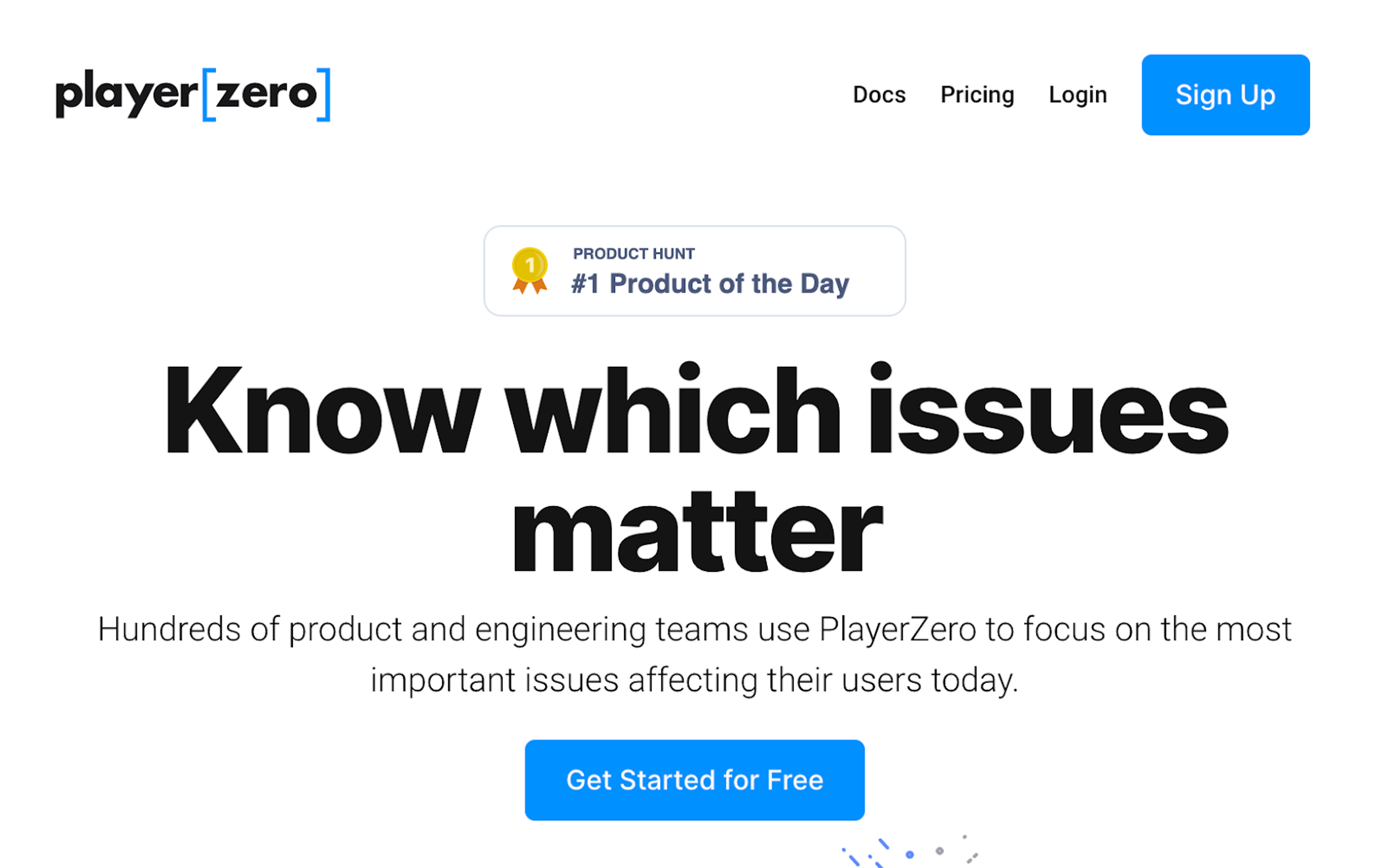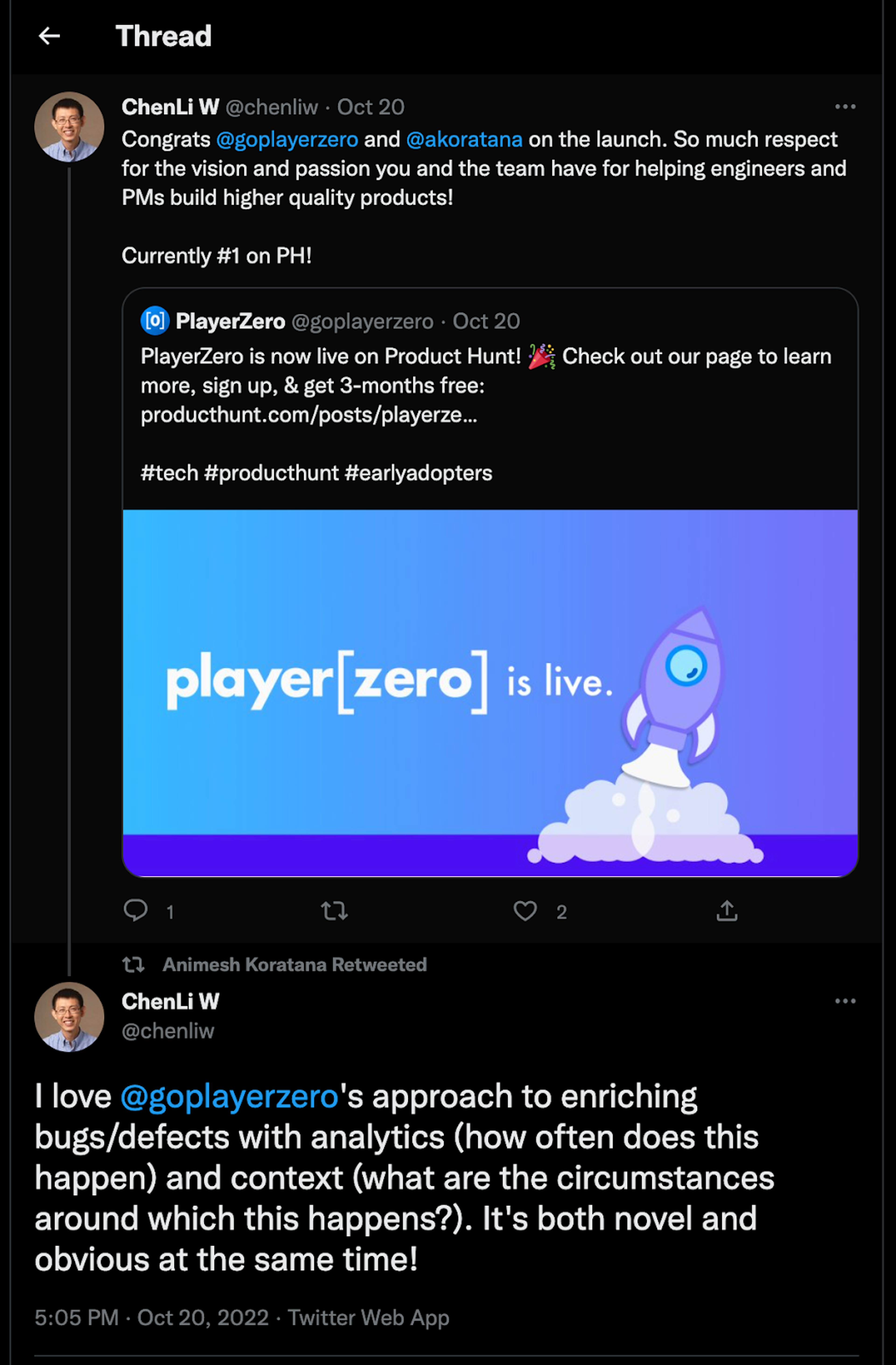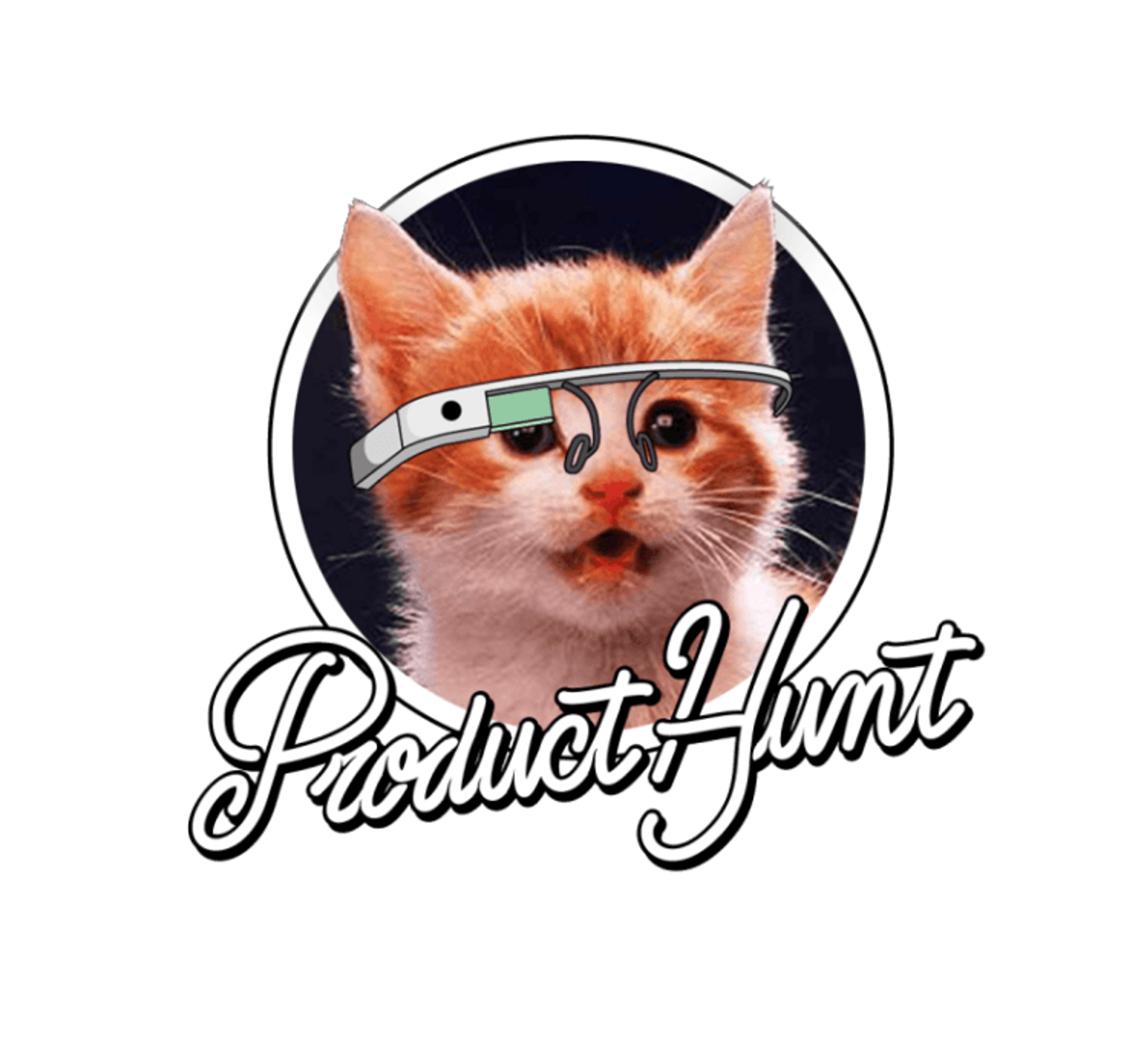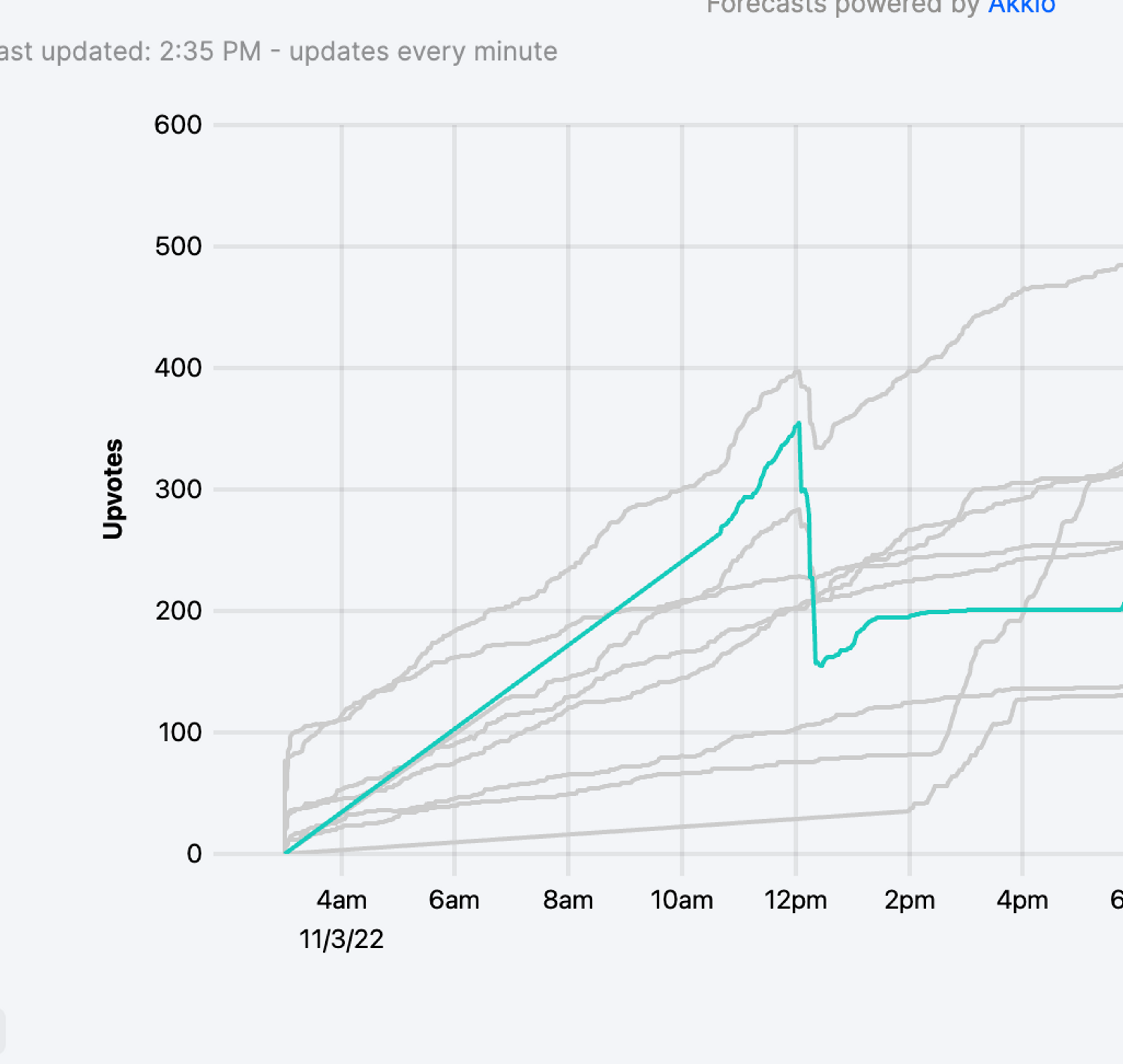The only Product Hunt launch playbook you’ll need (with templates!)
This guide will provide you with everything you need to prepare for your launch, navigate the chaos of launch day, and ultimately make it to the top of the podium based on everything we learned from our successful launch – for instance, did you know that your first hour’s worth of engagement on launch day is worth more than the entire rest of the day? More on that later…
We’ve also included some customizable Figma & Coda templates based on the actual creative & messaging we used to make it to the #1 product of the day – click the following links to go straight to the messaging & creative templates. Feel free to use them for your own launch and be sure to let us know how it turns out! And, since our goal here is to make this the only product launch playbook you’ll need, feel free to join our Slack community to ask any questions or request any additional templates/assets!

What is Product Hunt?
Product Hunt is a tech product-focused digital community founded by Ryan Hoover back in 2013. Each day, dozens of companies launch on the platform’s daily leaderboard, where products are ranked by their popularity in the hopes of getting feedback, traction, and if they’re lucky – the much elusive number 1 product of the day status.
Product Hunt terminology:
- Launch = your 24-hour listing on the PH homepage - the number of upvotes you get here corresponds to your place in the daily, weekly & monthly leaderboards.
- Makers = the people behind a project or company on PH.
- To hunt = posting/launching a new product on PH.
- Hunters = PH users who hunt other peoples’ products (sometimes referred to as Product Hunt influencers, although this is somewhat misleading nomenclature)
Why launch on Product Hunt?
It’s important going into your Product Hunt launch to ask yourself why exactly you’re launching in the first place… it’s easy to get carried away thinking about the juggernauts who were once in your shoes. The Robinhoods, Gimlet Medias, & Figmas of the world may have launched and found success on Product Hunt, but that doesn’t mean that their launch was the reason for their success. Rather, launching on PH is just one piece of the puzzle.
Product Hunt is widely regarded as the place to launch for tech products of all different shapes and sizes. However, in our experience as a B2B company, PH is much more favorable for B2C businesses given the individual early adopter nature of their user base. It’s certainly still worth launching a B2B product on PH, but you’ll have to work harder (and get luckier) to make it into the top 3, and you’ll have to set more moderate acquisition goals to avoid disappointment. Regardless of your end ranking though, PH can be a worthwhile place to launch for numerous reasons.
So, regardless of what type of tech product you’ve created, why exactly should you put yourself through the stress and effort of launching on Product Hunt?
Here’s why we decided to launch on Product Hunt:
- Our product was at a place where we felt confident in our market fit and time to value.
- After spending more than a year building our product, we had a few existing users who saw real value from the product, and were developing our GTM motion.
- We wanted more feedback on our product so we could keep improving it.
- We knew we needed to better align our messaging with our core value proposition, and we needed a low-cost channel to test its effectiveness.
If any of these sound like you, then go for it. At the end of the day, not making it to the top of the leaderboard won’t derail your company, and the knowledge you’ll gain and refinements you’ll make to your product & messaging will be more than worth the effort regardless of your ranking. The true value of launching on PH is validating your product’s value and testing out your messaging with a tech-obsessed audience.
Additionally, Product Hunt was acquired back in 2016 by AngelList, making it an excellent place to launch publicly if you’re interested in acquiring venture capital for your startup. There’s even a checkbox option at launch to allow your company to be visible to PH’s network of investors - you’re going to want to toggle that box on 😉.
Now that we’ve covered the basics, here’s our definitive guide to launching on Product Hunt:
How to launch on Product Hunt
Preparation
Before we get into it, a note on preparation time: start earlier than you think you need to… trust us. If you’ve already got a large network of connections who you think would be willing to help you spread the word, and you’re confident that your product won’t run into any technical snags on launch day, then you should be safe to start preparing about a month before your launch. In all other cases, we highly recommend planning ahead by about one financial quarter. 3 months will give you the time you need to build up a network and establish your teams’ presence on Product Hunt, plus iron out any kinks in your product and messaging before the big day and fill any holes in your knowledge about how to launch on Product Hunt.

When you’re picking out a day to launch, we recommend keeping an eye on the tech world and avoiding dates that align with big upcoming events that are likely to pull Product Hunt users away from the platform. When it comes to choosing a day of the week to launch, stay away from weekends as they’re a dead period on the platform and tend to underperform compared to weekday launches by a wide margin. Mondays and Fridays are similarly low-traffic and should be avoided if you’re trying to get in front of the largest possible number of eyeballs. Thus, Tuesdays, Wednesdays and Thursdays are the prime days of the week to launch – we launched on a Thursday.
There are a few major buckets to segment your preparation into when it comes to getting your product ready for primetime:
- Product improvements
- Data
- Messaging creation/refinement
The major product improvements that you’ll need to make in the lead up to launch will be specific to your product and the feedback you’ve already gotten from your existing user base, but some key things to consider are the following:
- Onboarding – double, triple, or even quadruple check your onboarding flow - seriously. If there’s anywhere you should be putting time in at this point when it comes to your product, it’s your onboarding. If Product Hunt visitors can’t actually use your product, or even if they’re slightly inconvenienced on the way there, you most likely won’t get many users out of your launch.
- Pricing – have an answer for how your pricing model works today. You’ll likely change this overtime, but having a clear, easily understandable pricing model in place at launch is crucial to avoiding user frustration. If you advertise a discount for Product Hunt users, make sure this is clearly reflected on your pricing page & within your product. Otherwise, you’ll just succeed in pissing people off and may even earn yourself some negative reviews.
- Servers – we upgraded our servers weeks before our actual launch to ensure that no matter how much traffic we received, we wouldn’t be leaving new users in the dark. Sudden spikes in traffic are one of the most common causes of server overload, so be sure to double check that your servers have the capacity to handle thousands of new users entering your site on a single day.
When it comes to data, each product will have its own unique funnel & KPIs and therefore will require its own set of tracking and reporting solutions. However, in general, it’s incredibly important to ensure that you’re able to attain clear, accurate, and actionable data from your launch. Here’s a few key factors to consider:
- Google Analytics & Tag Manager – launch day is chaotic as heck. How you’re able to analyze your launch data after the fact will largely come down to the robustness of your tracking going into launch. The first step is setting up Google Analytics & Tag Manager (or an equivalent) on your front end site to ensure you’re tracking important top of funnel metrics. Put heavy emphasis on tracking where users came from (this is easy to do with UTM tracking), and tracking their key actions on your site like clicking sign up buttons, visiting content like docs and your blog, visiting your pricing page, etc. Make sure these actions correspond to your funnel to maximize the value of your insights.
- Tracking pixels – if you currently utilize or plan to utilize digital paid advertising, you’ll want to ensure that your pixels are set up & properly firing on your site before launch day. Whether you plan to run ads on LinkedIn, Twitter, Reddit, or any other social media platform, you’ll have the option to establish retargeting audiences with your launch data as long as you collect it in the first place.
- UTM tracking – visit Google’s Campaign URL Builder to set up custom URLs for all your different traffic sources on launch day. For example, if you have a newsletter going out to your existing subscribers at launch, you could set up your link to contain the following:
a. Campaign ID: utm_id = phlaunch
b. Campaign source: utm_source = newsletter
c. Campaign medium: utm_medium = email
Messaging will likely be the bucket you put the most time into during your prep for launch. Ensuring you clearly and concisely communicate your product’s unique value proposition is critical to success in general, but even more important on Product Hunt, where you’re directly competing for mindshare with other innovative products. Here’s a few of the major messaging pieces you’ll want to put some time into:
- Home page - or wherever you plan to drop Product Hunt users who visit you from your launch page. Make sure that the value and use cases of your product are clearly articulated in a way that an early-adopter techie audience can understand. But don’t over-index on what you think PH users want to hear – make sure your messaging faithfully conveys the value of your product in a way that your target persona will understand. This makes for a more accurate test of the PH audience’s response to your product.
- In-product messaging - make sure your product is easily navigable and has clear messaging that gives users important context without pulling them away from the core features of your product that will deliver the most value. When a user takes an action, your in-product messaging should reinforce the value of that action and motivate them to continue.
- Launch day discount - Product Hunt users expect a discount or free trial for a product, period. Unless you’re an established company with a new feature rolling out that you want to get validation on, be sure to offer a compelling discount or free trial period to PH users to capture their interest and push them to actually try out your product. Our product has a freemium model, so we offered PH users 3-months free on our paid growth tier so they could get an accurate view of the long-term value PlayerZero could deliver for their teams.
With these product focused checkpoints covered, here’s a list of marketing related pre-launch items to cross off your to-do list in the lead up to launch…
Pre-launch checklist
- Sign up for Product Hunt Ship & launch your upcoming page (this is your Product Hunt landing page) - here’s what ours looked like for reference:

The key here is to maximize the appeal of your product in as few words as possible. Extra points for snazzy visuals. Additionally, PH gives you the option to upload a list of pre-existing contacts to your upcoming page to show off the number of subscribers you have in total – we highly recommend doing so as in our experience, the volume of new subscribers we got through our PH upcoming page (Product Hunt landing page) increased sharply after uploading our existing contacts.
I. Make in-roads with the Product Hunt community. We found that the easiest way to do this is to actively engage in discussions & to support other upcoming launches and request their support for your launch. Additionally, scour the internet for Product Hunt communities on Facebook, Slack, Discord and elsewhere – the more exposure you can get to the PH community and relationships you’re able to build with other members, the more likely they’ll be to follow through and support you on launch day. The one caveat here is to do this authentically. Don’t join a community and abandon it immediately after your launch – share the love with the people that helped you out and stay engaged with them to help bring value to the community.
II. Keep your Product Hunt subscribers in the loop with regular emails from your Product Hunt Ship console so they can stay up-to-date on key product developments and get ready for launch day. Plus, send out regular newsletters to your existing users informing them about your launch, thanking them for their support and requesting ahead of time that they create Product Hunt accounts if they don’t already have them so they can support you at launch.
III. Spamming people who aren’t relevant to your product is a sure-fire way to develop a bad reputation, but carefully calculated cold outreach through a platform like LinkedIn can actually mean the difference between a successful launch and crickets. In the month leading up to our launch, we reached out & requested to connect with Product Managers whom we had 2nd degree connections with on LinkedIn and simply informed them of our launch date, gave them a brief description of our product and a link to our upcoming page. This worked wonders, as we weren’t being forceful or demanding, but simply introducing ourselves and our product and requesting that they check it out.
IV. Add the Product Hunt upcoming widget to your home page or make a dedicated Product Hunt landing page directly on your site. This will serve as a reminder to your existing users that your launch day is coming and will allow any users who come directly to your site on or before launch day to navigate from your site back to your launch page on PH.

V. Create a social media sharing kit for the people in your network who are willing to share your launch with their audiences on launch day. As far as social sharing goes, the more people sharing your messaging the better - it’s certainly an advantage if you have influential friends who are happy to share your launch day assets with their own followings on social media. But, keep in mind that unless they’re specifically an influencer on Product Hunt, or someone with an audience you think will be relevant to PH, you’ll have to think through where exactly you want to send the traffic they produce.
Here’s an example of a Twitter repost that our good friend ChenLi Wang made on our launch day. Note that we made sure to request that he repost our launch day announcement since it had both messaging & creative that we liked and were comfortable sharing with new audiences.

VI. Create a 1x1-formatted GIF animation for your logo. While it’s not strictly required that you use a GIF on your launch page, it’s been shown to greatly increase performance. Think about it, in a scenario like a Product Hunt launch, where time and attention spans are finite, making the most eye-popping listing possible is crucial to capturing user interest.
VII. Create or commission an in-depth product launch video which shows off the best aspects of your product & lives on YouTube. This is a great asset which will be easy to leverage outside of your launch as well. Here’s the video we made for launch: https://www.youtube.com/watch?v=9xPkzBdBGeg&t=12s
Templates & assets
Make a copy of this Coda doc containing templates crafted from all the messaging we used to make it to number 1 on Product Hunt and customize them for your company’s launch.
Get the free Coda doc & steal the messaging that got us #1 on Product Hunt
Make a copy of this Figma page to customize our creative templates based on the creative we used to make it to number 1 on Product Hunt.
Get the free Figma file & steal the creative that got us #1 on Product Hunt
And, for when you need it, here’s the Product Hunt logo in PNG format:

PlayerZero logo PNG
Launch Day
Whether you have a hunter (remember, these are the rough equivalent of Product Hunt influencers functionally as they can play a major role in signal boosting companies within the community) or not (more on our opinion on getting a hunter later), you’ll want to have your launch page set up the day before launch and schedule it for 12:01 AM Pacific Time. From this time onward, at least one member of your team should be awake and in front of their computer in order to respond as quickly as possible to any comments as they come into your page.
One rumor that proved true during our launch was that the first hour is absolutely crucial to ranking in the top 3. During this first hour, we dedicated two team members solely to monitoring our launch page and responding in-depth to every comment that rolled in. Be sure to phrase your responses to comments in a way that keeps the conversation going – the number of comments you get will impact your rankings and it can be much easier to keep these threads active than to generate new upvotes in a pinch.
If you start lagging in the rankings at any point, be sure to re-engage any community members and people within your network that you’ve been engaging with over the past month(s) to remind them about your launch. Don’t get discouraged if people don’t immediately follow through on engaging. Ping them up to 3 times politely and keep in mind that people are busy – they aren’t ignoring you, and if you just give them a chance, they’ll likely follow through and support you when it’s convenient for them.
While buying upvotes is obviously underhanded and lame, it’s very possible that someone will do just that in an attempt to steal your rightfully-earned status at the top of the pack. This happened to us about midway through the day, when a company at the bottom of the leaderboard suspiciously caught up to our high upvote count in a matter of hours despite having literally zero comments. This type of cheating is fairly obvious and Product Hunt support caught it around noon, leading to the offender being audited and ultimately stripped of their fraudulent upvotes. We recommend monitoring the Product Wars 2 site https://pw2.akkio.com/ to detect any strange behavior from your competitors and project your own upvote trajectory throughout the day. If you notice competitors with suspicious activity, don’t hesitate to report it to support.
Aside from monitoring the comments and reminding your network to support your launch, sit back, try to relax, and enjoy the experience. Launching on Product Hunt is nerve wracking, but at the end of the day, it won’t make or break your company.
Debunking common hacks
#1 - You can buy your way to the top of the leaderboard
The first thing to know is that buying or manipulating Product Hunt upvotes will come back to bite you in the ass. The Product Hunt team has strict rules against manufacturing engagement, so that means do not try tobuy Product Hunt upvotes, as any service offering to do so for you will utilize bot traffic - a form of cheating that Product Hunt takes very seriously. Not following Product Hunt’s guidelines will at a minimum decrease your chances of winning, and at worst, could even get your company banned from the platform.
Besides potentially endangering your account, buying upvotes won’t actually help you make it to the top 3, since it’s not just the number of upvotes a company receives, but the quality of upvotes and community engagement that determines your ranking. Additionally, buying upvotes will lead to a launch curve that looks something like this:

If you compare the teal line above to all of the other lines before noon, you’ll notice that their trajectory is much cleaner and contains a lot less variation than the others around it - this is because the account purchased bot traffic in order to artificially boost themselves to the top of the leaderboard. As you can see, by the time noon came around, they had lost most of the upvotes they purchased due to an audit on the part of Product Hunt’s staff. Ironically, their launch ended up receiving a significant number of real upvotes later in the day, but instead of shooting up to the top 3 like they may have otherwise, their ranking remained low due to their inauthentic activity earlier in the day.
#2 - I’ll get all my friends to sign up on launch day and upvote me
Do not do this! Messaging all your family members and friends on launch day and telling them to make an account on Product Hunt so they can upvote may actually decrease your chances of ranking high. In the words of Product Hunt’s support blog:
“Please keep in mind that upvotes that are considered by the system as spammy can end up damaging to the overall ranking.”
Instead, ask people in your network who don’t have a Product Hunt account to sign up around a month before your launch and actively upvote/comment on products on the platform that interest them regularly in the lead up to your launch day. Doing so will ensure that your networks’ votes count for you and not against you.
#3 - You have to have a prominent hunter for a successful launch
In our honest opinion, hunters on Product Hunt are highly overrated. Remember the comparison we made of hunters being the rough equivalent of Product Hunt influencers? Well, this is where that analogy falls apart - hunters aren’t allowed to collect money in exchange for hunting a company (that’s not to say it never happens, but it’s against the rules). Therefore, don’t expect a great degree of professionalism from a hunter unless they’re someone you already know.
We actually contacted a hunter who agreed to hunt our product a few weeks out from our launch, only for them to ghost us in those nervous final hours before go time – forcing us to forego our strategy at the last minute and launch ourselves. This turned out to be a blessing in disguise though, as doing so didn’t seem to have any negative impact on our launch success, and actually helped build our credibility on the platform since the record of our successful launch is now reflected on our Founder’s account rather than some hunter’s.
Frequently Asked Questions
#1 - Am I allowed to send people to my launch URL or do I have to send them to the Product Hunt home page?
Lots of people are under the impression that for some reason, Product Hunt prefers it if you send traffic to their homepage instead of your individual launch URL. Product Hunt have actually addressed this issue directly in their myth busting blog & confirmed definitively that this is not true. Avoid the unnecessary headache for your network and send them directly to your launch page.
#2 - Can I launch again if it doesn’t go well?
Yes and no… while Product Hunt has a standard waiting period of 6 months between launches, you are actually able to launch again faster if your product has had a major pivot or you’ve shipped a bunch of new features that substantively change the value proposition of your product. Either way, if you attempt to launch again sooner than 6 months after your first launch, you’ll need to make a request to the Product Hunt team (you’ll be prompted to provide a written justification for this when you attempt to launch, so no need to contact support directly). They’ll review your request and let you know if you’ve been approved via email.
#3 - Will I get in trouble if I ask people to upvote my launch page?
This one’s a little more gray than other articles on the subject might lead you to believe. Certainly never ask anyone in a public forum to upvote your launch, as this is a violation of Product Hunt guidelines. However, if you have users who have already used your product (including any newsletter subscribers), you’re free to ask them for upvotes and support as long as it's through private channels.
#4 - How many products should you launch with?
Easy answer - you’re only allowed to launch one product at a time (plus, keep in mind the 6 month wait period we mentioned earlier).
Conclusion
In the end, launching on Product Hunt was an exhilarating, anxiety-inducing, and incredibly rewarding experience for our team. The outpouring of support we received showed us that people really respond to our core value proposition and are able to immediately envision the value that PlayerZero can bring to their product & engineering teams. Thanks to our launch, we were able to make some great connections and gain some fantastic new users, get an early win for our team, build up our messaging & creative assets and drum up a great amount of interest in PlayerZero.
If you’re interested in learning more about how PlayerZero can help your engineering & product teams better communicate what’s breaking, why it matters, and how to fix it, you can explore PlayerZero’s docs here, or create an account and get started instantly!
Additional Resources
- How to get #1 on Product Hunt without being a jackass - Aidan Hornsby
- Product Hunt launch guide - Product Hunt
- Product Hunt launch playbook - Ladder
